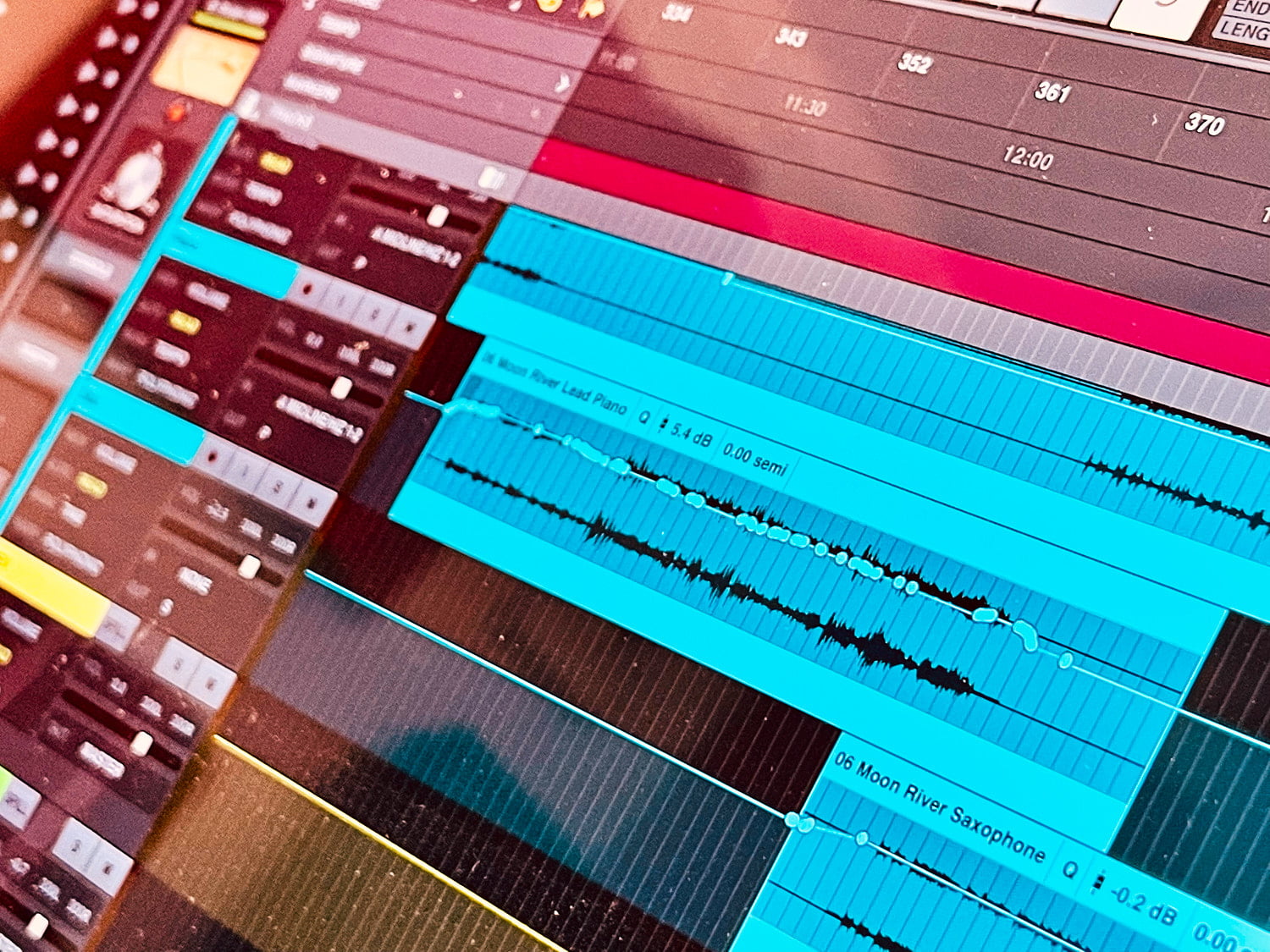Recording, editing, mixing, mastering
Recording, editing, mixing, and mastering are four key stages in the audio production process, each with a specific purpose and set of techniques for shaping and refining the sound of a recording.
What is recording?
Recording in a recording studio typically involves capturing audio performances onto a digital or analog medium, often with the goal of producing a high-quality final product for release. This can involve recording individual instruments or vocals separately, or capturing a full band performance all at once. The recording process may involve several stages, including setting up microphones, adjusting levels and tone, overdubbing, editing, and mixing. The recording studio will typically have a control room where the producer, engineer, or other personnel can monitor and adjust the recording, and an isolated recording booth or room where the musicians perform. The aim is to create a clean and controlled environment for capturing audio that accurately represents the desired sound.
There is another approach called live-room recording, where the band and recording engineer are in the same room. This approach aims to capture the energy and interaction of a live performance by recording the band playing together in one room, rather than recording each instrument separately. At ASV we mainly use this approach. The band may perform in a large room with good acoustics, and the recording equipment is set up to capture the sound of the room as well as each instrument. This approach can produce a raw, natural sound that captures the essence of the live performance, but it may also result in more room noise and bleed between instruments, which may need to be addressed during the mixing process. Live-room recording is often used for genres that prioritize live performance energy and feel, such as rock, blues, jazz or singer-songwriter.
What is editing?
The editing process in a recording studio involves fine-tuning the recorded audio to create a polished final product. This can include removing unwanted sounds, such as clicks, pops, or breaths, adjusting timing and pitch, and splicing together the best takes of a performance to create a seamless final recording. The editing process may be done using digital audio software, such as Pro Tools or Logic, which allow for precise control over the audio and enable the engineer to make detailed changes to the performance. In some cases, editing may also involve adding special effects, such as reverb or delay, to enhance the sound of the recording. The editing process can be a time-consuming and meticulous task, but it is an essential step in the recording process that helps to create a high-quality final product.
What is Mixing?
The mixing process in a recording studio involves balancing and shaping the individual audio tracks recorded during the tracking stage to create a cohesive final mix. The steps in the mixing process can vary depending on the specific project and the engineer’s preferred methods, but a typical mixing process might include the following steps:
- Preparation: This involves organizing the tracks and setting up the mixing environment, such as creating a mixing template and importing the recorded tracks into the digital audio workstation.
- Level Balancing: This involves adjusting the volume of each track so that the mix is balanced and all instruments and vocals are clearly audible.
- Equalization: This involves adjusting the tone of each track using equalization (EQ) to remove unwanted frequencies or to enhance specific frequencies to help the tracks fit together in the mix.
- Panning: This involves adjusting the stereo placement of each track in the mix to create a sense of space and separation between instruments.
- Dynamics Processing: This involves using dynamic processing, such as compression and limiting, to control the dynamic range of each track and to even out the levels of each performance.
- Effects Processing: This involves adding effects, such as reverb, delay, and modulation effects, to enhance the sound of the mix.
- Automation: This involves making changes to levels, panning, effects, and other mix parameters over time to create a more engaging mix.
- Finalizing the Mix: This involves checking the mix for any technical issues, such as clipping or phase problems, and making final adjustments to the mix.
These steps are typically repeated multiple times, with the engineer making adjustments and revisions until they are satisfied with the final mix. The mixing process can take several hours to several days to complete, depending on the complexity of the project.
What is Mastering?
Mastering is the final stage of the audio production process in which the final mix of an album is processed and optimized for release. The goal of mastering is to create a polished, consistent, and coherent sound across all the tracks on an album, and to prepare the final mix for distribution on various media formats, such as CD, vinyl, or streaming services. The following are some of the common steps involved in the mastering process:
- Equalization: This involves using equalization (EQ) to adjust the tonal balance of the mix and to make minor tweaks to the overall frequency spectrum.
- Dynamics Processing: This involves using dynamic processing, such as compression and limiting, to control the dynamic range of the mix and to make the overall volume level consistent.
- Stereo Enhancement: This involves using stereo processing, such as stereo wideners and image enhancers, to enhance the stereo image and increase the spatial dimension of the mix.
- Finalizing the Master: This involves checking the master for technical issues, such as clipping or phase problems, and making final adjustments to the level, balance, and tone of the mix.
- Dithering: This technique involves adding a low-level, random noise signal to the audio signal before reducing the bit depth. This random noise signal helps to mask the quantization noise by spreading it across the audio spectrum, making it less noticeable to the listener. Dithering can help to improve the overall sound quality of a master file by reducing the audible effects of quantization noise.
The mastering process is typically performed by a mastering engineer who has specialized knowledge and experience in audio processing and audio equipment. The mastering process can take several hours to several days, depending on the complexity of the project and the engineer’s workload. The end result of the mastering process is a high-quality final master that is ready for distribution and commercial release.
Interested in our services?
Send us an email or give us a call, we are happy to answer all your questions, find the best solution for you, and get your music recorded and produced.

